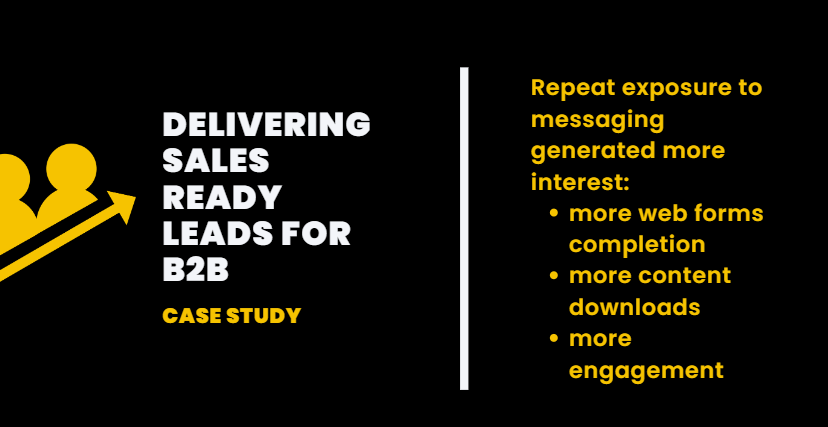Brief and goals
An educational consultancy reached out to get help engaging specific audiences. Their marketing efforts helped them reach 40,000+ leads in an academic year, but to keep acquisition costs down, the marketing and call centre team were focused on leads that could be converted quickly. This meant that any leads that didn’t convert soon or were looking at longer terms (future years) were no longer targeted.
Leads were generated through many channels and then passed on to their internal call centre, which tried to contact them and convert them to sales-qualified leads. However, in some cases, these leads couldn’t be reached via phone, so a new strategy needed to engage with them and assess whether they were still relevant.
They decided to optimise their funnel and employed us to:
- Re-engage the audiences that couldn’t be reached by their call centre and try to convert them to sales-qualified leads
- Nurture audiences that wouldn’t convert in the current academic year to keep them close to the brand
Challenges
Faulty contact data—Part of the reason the call centre couldn’t get in touch was that the contact data was incomplete or wrong (e.g., the wrong contact number or a misunderstanding of the writing when lead information was collected on paper).
Content marketing strategy – the marketing team’s main focus was lead generation and conversion, as was the content they were creating, which wasn’t tailored to existing audiences or to nurture leads for future academic years.
Lead nurturing communication – at the beginning of our collaboration, leads that were a different academic year didn’t receive any communication from the client, up until the year they could convert.
Irregular marketing activity—While leads were generated across the year, the marketing activity was concentrated around the main deadlines the client had from his educational clients. That meant the marketing was based around them, so leads did not receive constant communication.
Overcoming challenges to deliver results
1. Faulty contact data
The call centre only used the phone information to contact students, so we still had an email address that could be used where the phone information was incorrect, and both phone and email had become unresponsive. We targeted the audience with email campaigns, with average open rates of 10-12%.
We updated the email data (which was collected in a GDPR-compliant way) to Facebook to create new audiences for ads, which were then targeted with our content marketing and community-building activities (see below).
We’ve also developed focus groups to understand the needs of the current target customers and develop a new strategy to collect data and overcome the problems that led to misunderstanding of contact information. However, with face-to-face school activity having been paused in 2020, the company adapted the strategy to a digital one, based on events.
Results: 218 sales qualified leads (0.5% conversion rate on leads that were up to 3 years old and unengaged) and 80 closed contracts (36% conversion rate from SQLs in this campaign compared to 6% when these were called by the call centre).
2. Content marketing strategy
To engage the audience in new ways and offer them something valuable to come back to, we developed a content strategy that was mainly focused on lead nurturing rather than lead generation. We mapped out the clients’ needs and planned live events, Q&A sessions, and Instagram takeovers to give them general information and offer them a platform to engage with past customers, who could offer testimonials from their experience.
Results: The live events have an average viewership of 2,400 organic views on Facebook, compared to previous videos with a maximum of 1,000 organic views.
3. Lead nurturing platform
As mentioned previously, the marketing strategy didn’t include leads that weren’t converting in the current academic year due to resource limitations. One of our objectives for the project is to start communicating with these leads and nurture them for future years.
We started a Facebook group where they can find general information about the topic, to keep them informed and close to the brand. To make sure every new lead finds out about the email, we have set up an automated CRM flow that sends an email invitation to the group whenever a new lead is created and marked as a marketing-qualified lead but not ready to convert in the current academic year.
Results: The Facebook group has grown to 1,300+ contacts in 10 months, reuniting the leads that needed nurturing, unengaged leads, and new ones and generating 2-3 sales-qualified leads per month.
The overall ROI of the project was equal to the ROI of the client’s overall marketing activity.
4. Irregular marketing activity
To ensure we address every new lead in the same way, we developed an automated flow to qualify leads after the call centre tried to get in touch and failed. The flow has 4 steps and is meant to progress a lead through the funnel by offering them more information about the topic in which the educational consultant is active.
The flow also helps reveal where leads drop off, and if they prove not interested in the educational consultant’s main offering, they can be targeted with other services from the group.
Lessons & future insights
When we ended the project, the lead nurturing and re-engagement campaign had been running for 15 months, and we’ve learned a few things along the way:
- Never stop adapting and pivoting. Our plan of activities changed a few times along the way because as we started getting results, we realised we needed to adapt. An SMS campaign that didn’t provide the expected number of responses showed us that we needed to pivot towards social media, emails and live events.
- Some leads can be re-engaged, and others are long gone. Trying to address all leads in the same way doesn’t generate the best results, which is why we developed the automation flow. It can give us insight into what content is being consumed and where we can be helpful for the customer on a channel they prefer.
- Lead conversion is not a number game but a quality game. Sometimes, you don’t need more leads to get more contracts; you need to be better at nurturing them and offering the content and support they need when they need it.




